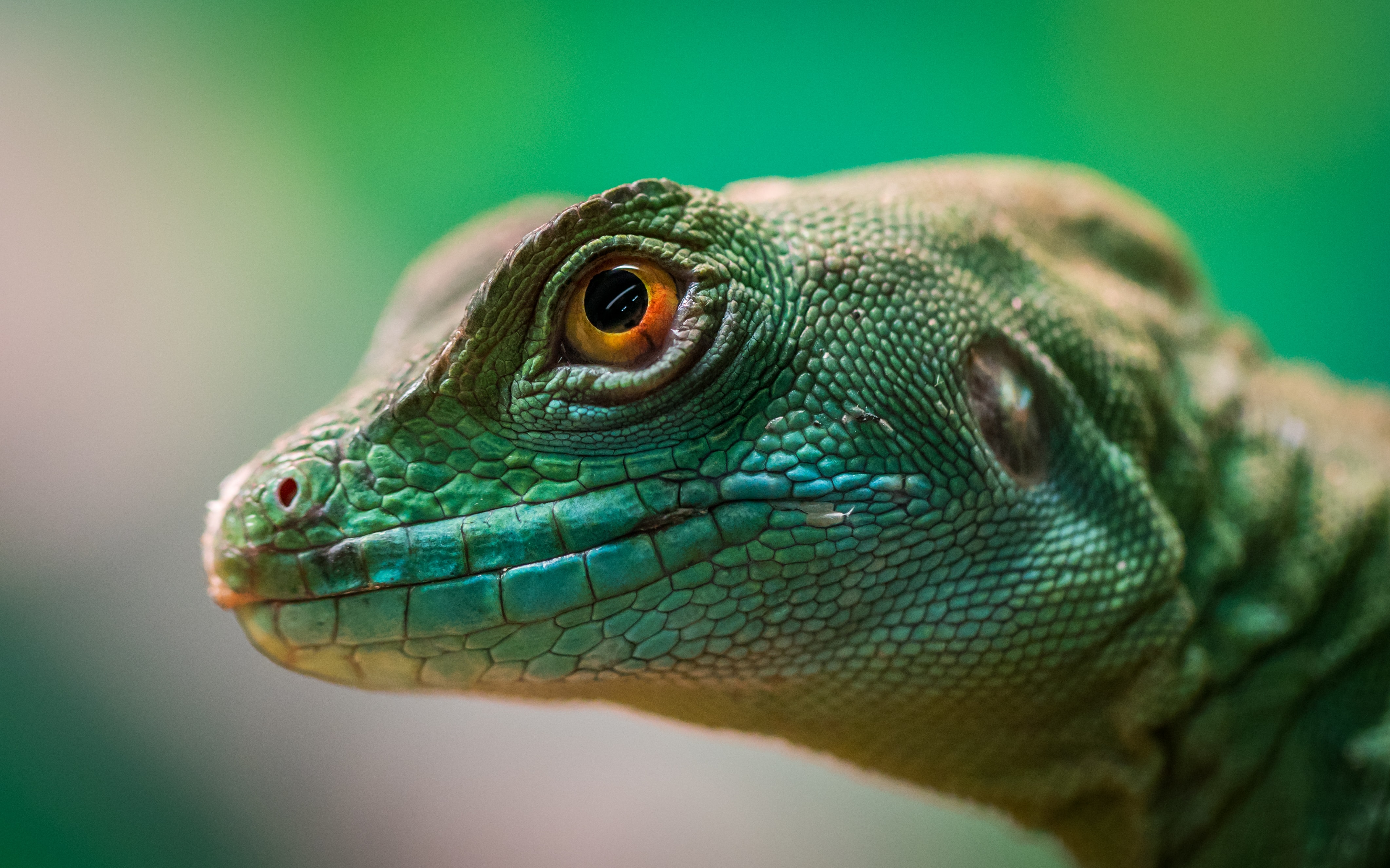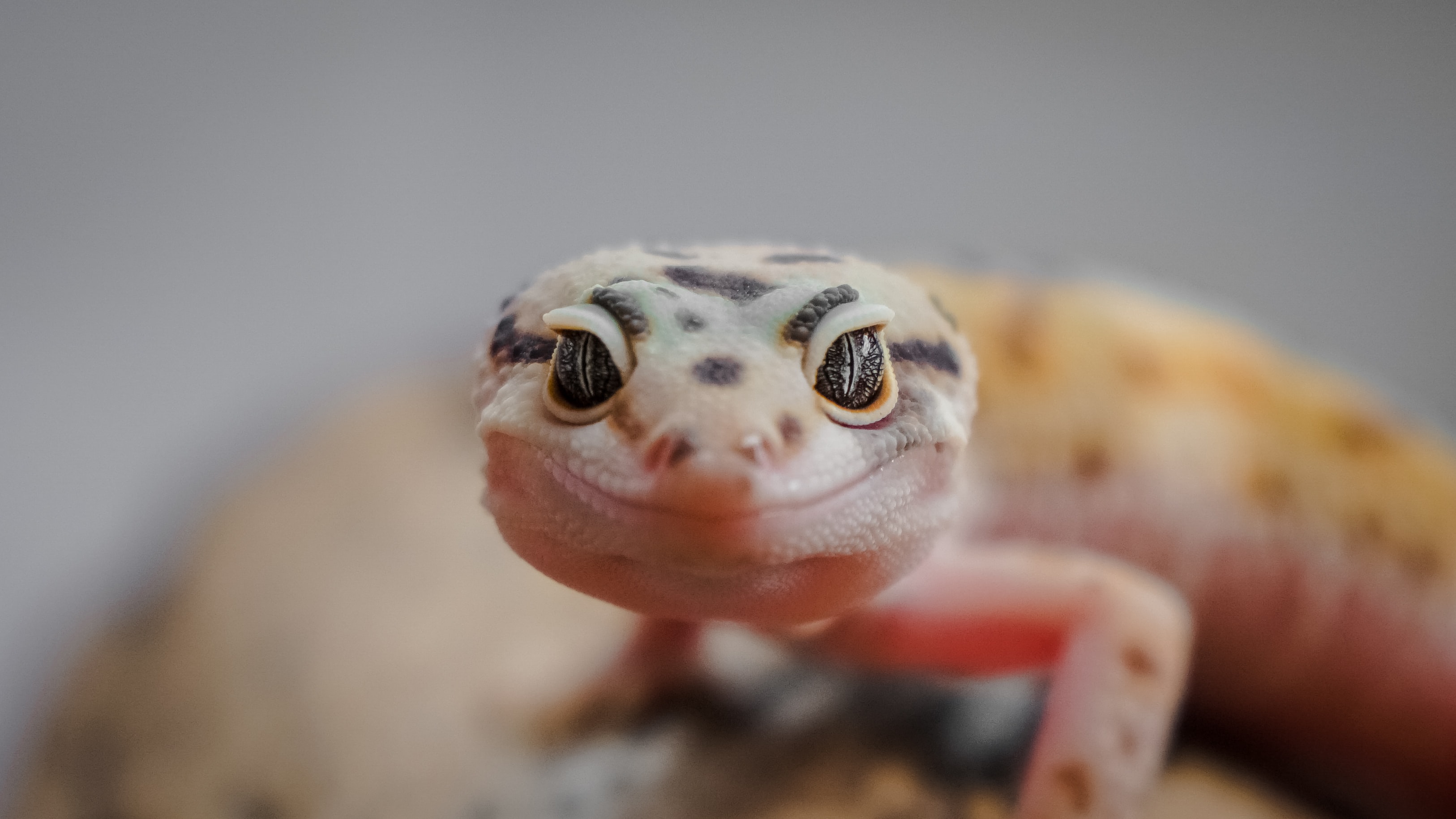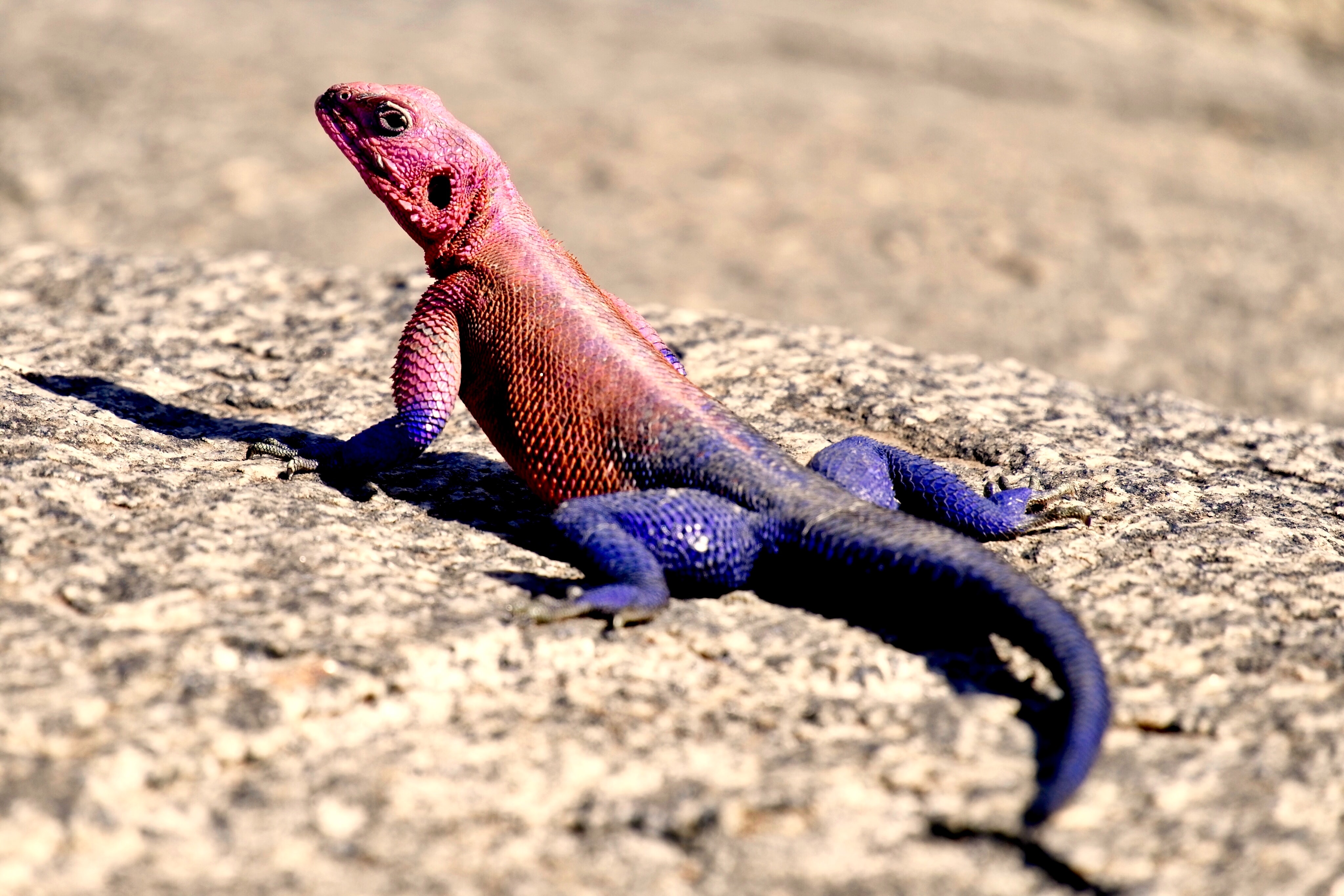Tipping the Scales for Lizardfolk
Sorra’s translucent nictitating membrane slid over her golden eye as she concentrated on the last stitch. Her scales turned a sapphire green as the last knot slipped into place. Beautiful. Satisfying. Like aligning a crooked book with the rest of the shelf. She pressed the slick, cold healing membrane over the wound, followed by a tight bandage. It wasn’t instantaneous, but the membrane’s medications would seep into the patient’s skin and, if kept clean, would allow the wound to heal with no scaring. “You’ll heal up just like a Kemlin in two days,” she said.
Her human patient did not like that and kept glaring at her as they had the entire time in disgusted silence. “Get your horrid blood poisons out of me, you snake,” they finally spat.
Humans. They loved to hate. Why, Sorra could not tell, but this town had a distaste for anyone scaled. But, she was a Kemlin physician. No matter what sad, putrid corner of the galaxy they were in, she would always assist her patients. Even if said patient had decided she was somehow a monster.
Wiping her claws, Sorra corrected, “I am not.” She playfully opened her mouth to prove she was not hiding a forked tongue and twin fangs behind her lips. She had underestimated her patient’s sense of humor as they flinched away. She turned a disappointed brown. “Well, you’re all sewn up. Have a—”
Her patient snatched their bags and shirt and bolted towards the door.
“Nice day,” Sorra sighed. Her left eye followed the patient out as she finished cleaning up. Sometimes they would try to swipe a tool on the way out just out of spite.
Another figure danced around the patient hurrying out. Marcy. Sorra sighed and tried to keep from turning an even deeper chestnut hue. Just what she needed; another human.
“I see you infected another one with your ‘blood soaked bandages.’ Will they start growing scales as well?” Even with the air quotes, Sorra still didn’t find it amusing. Marcy tried to save her poor joke with cough and, “Hey, I have a job for us in the fifth quadrant! The chumps there can use my gun and your medications for a good price!”
Sorra frowned, shifting to a grumpy orange. “The fifth quadrant? Marcy, that’s the coldest country on this planet.”
“So?”
“So, are you paying for my thermoregulator gear? It’s still broken from your last adventure, remember?”
Marcy balanced each word, testing their weight as she spoke, “But if you had the thermoregulator, you’d go, yes?”
“Well I—” Sorra couldn’t even finish. She should have said no immediately. Marcy grinned and sprinted out, taking Sorra’s lack of rejection as automatic confirmation. Sorra flushed red and snatched the bottle of belfist liquor on the other side of the room with her tongue. Yet again, humans made things far more complicated. This was going to be a long, long night.
Lizardfolk: A Surprising Choice!

I must be honest: when I threw this option out there for my last worldbuilding pole, I threw this option in there for kicks and giggles. Not that I wouldn’t enjoy building lizardfolk, but I didn’t think it stood a chance against dragons or dragonborn. To my utmost surprise, lizardfolk won by a landslide.
It’s surprising not because lizardfolk are “boring and trite” (hardly), but because they’re not exactly a common fantasy species in both historical and modern fiction, like elves or mermaids. They’re very scarce in lore.
But believe me, they are out there… and there’s surprisingly little detail in their lore. Off the top of my head, I can think of only a few major fantasy franchises that prominently use lizardfolk: Warhammer (as Lizardmen), Elder Scrolls (the Argonians), Dungeons and Dragons, and Legend of Zelda.
Couldn’t think of any in the books that I’ve read, which is, and isn’t, a shock. A lot of fantasy species are heavily influence by Tolkein (hence the insane number of elves, dwarves, etc. in modern day fantasy), and lizardfolk don’t feature prominently in those founding works. And even when they are featured in fiction (be it game or TTRPG), they really aren’t that memorable in terms of culture. But again, from my pole, there seems to be an interest in the species, so we know they have untapped potential.
Keep this in mind, because “untapped potential” is the theme for the lizardfolk! (Spoilers!)
Let’s take a quick gander at lizardfolk in D&D and warhammer. In terms of mechanics, they’re kind of… meh. They’re strong, they have natural armor with their scales, and they can “swim real good.” In a significant amount of artwork, I see lizardfolk embellished with Aztec-like aesthetics (none of the cultural aspects), which is interesting because lizards in general are all over the world, not just in South America. Lizardfolk could, and should, be depicted with their own unique culture(s) that are as diverse as the lizard species. But as to their origins, there’s not a lot of lore for me to work with (as in there’s really nothing for me to work with).
In Legend of Zelda, the Lizardfolk (called “Lizalfos” in the franchise) are just your standard enemies. While each game has a different mechanical take on this species, they don’t function story wise beyond “bad guy’s minions.”
In terms of design, every lizardfolk design tends to look generally the same: a crocodilian head, big muscles, green scales, and sometimes have a stretchy tongue trick. In short, it’s your average green garden lizard jacked up on steroids. The notable exception would be Legend of Zelda: Breath Of The Wild, in which the species is design in the likeness of a chameleon. Not only did the creators allow the species to have independently moving eyes like the chameleon, they also made the species blend into its backgrounds, making the lizalfos the bane of my existence during certain Master Sword Trials.
What does this mean for us?
This means freedom. This means we can go crazy in the amount of liberties we can take. All bets are off.
Let’s go crazy!!!
Lizard, Not Dragon

…Or frogs, or crocodiles, or snakes.
Now, the frogs and snakes are probably not a surprise. But crocodiles are actually in a different taxidermic order, Crocodilia, while lizards are in the order Squamata (along with snakes).
(For a certain group of interested readers, reptiles in the Squamata are the ones that have hemipenes. So, crocs and alligators lack these. More on this later!)
Alas, no gator-people for this post.
We must set some parameters for our build, right?
While we’re at it, we need our lizard folk to be ectotherm, or “cold-blooded.” While there is one warm-blooded lizard out there, the Tegu, lizards are considered cold-blooded, and they are then dependent on their environment maintaining their internal temperature. So, that means that lizardfolk societies either build their cities in an environment that allows them to function all year round (i.e. a desert), have a society that can still function while they hibernate in the winter, build their towns in a way to counteract the winter weather (i.e. build houses on hot-springs to keep houses warm), or they have gear to maintain a decent internal temperature (for a scifi environment).
Lizard Sexy Bits (And the “No Boobs” Section of the Post)
Stop. Putting. Breasts. On. Non. Mammals.
Sure, the choice is ultimately the creator’s how they choose to depict the fictional females of a fictional species with breasts. But as this is a blog on incorporating science correctly into fiction, I do have to put my foot down, both scientifically and morally.
I know I have discussed this before in my gorgon and mermaid posts, but let me really break it down as to why you should strive to avoid this in general.
Mammary glands are in mammals. That is why “mammals” are called “mammals.” If a creator’s answer to showing that a given lizardfolk is female is “put some boobs on their chest,” they are accomplishing three things:
1) The creator is sexualizing them. I’m sorry, but they are. Even if the intent is not to sexualize, the impact is sexualization of said character.
2) The creator has broken their audience’s immersion, or at least a fair chunk of said audience. Yes, readers can suspend disbelief, but only so much. It may not be too jarring for some of your audience, but it can be very jarring for the rest. Plus, it discredits the creator, as it clearly shows that you haven’t done your research (another way one loses a reader’s immersion in one’s story).
3) The creator is not celebrating the amazing diversity of sexual dimorphism in these animals. Or in humans, for the record.
See, lizards are one of those amazing animals with a HUGE variety of how each species sex works.
However, if one needs to focus on lizard genitals and sexual organs, let’s at least get it right! If I am making lizardfolk on this here post, let them be anatomically correct! Male lizards have something called a hemipenis. While they definitely do not have breasts, female monitor lizards have “hemiclitorises.” Mirroring human research into reproductive health, the hemipenis has been extensively studied, while the hemiclitoris remains a relative mystery and understudied field.
What does that mean? Well, that means that our lizardfolk will have very non-human mating. That’s as far as I’m gonna go with that!
And we must toss out the same old boring gender roles for lizards, because your lizard folk may not need the boys at all. A good place to note that the Komodo dragon can reproduce asexually, aka parthenogenesis. That’s right: the females don’t need the males to keep the species going.
And the New Mexico Whiptail lizard only reproduces through parthenogenesis, making them a female-only species. They will also mate with the other members of their own species, even though mechanistically, mating is unnecessary. That’s right: nature stans for LGTBQ+ rights.
Some lizards also use sexual mimicry, such as the Flat Lizard, in which they are able to avoid aggression from other males by taking on the female appearance. This trait allows these lizards to enter another male’s territory and mate with the females in the area. In the bearded dragon lizard, there’s a third sex called a “Superfemale” that have the chromosomal makeup of a male but is functionally a female (can lay viable eggs). This is due to temperature changes in the environment that can shift male embryos in the egg to a female. These superfemales behave similarly to males (measured by “boldness” in the paper) and had similar body structure to males.
What can we do with this? Well, I think we really need to toss out whatever gender roles we have in our society, and rebuild for each unique species of lizardfolk (TLDR: nature is inherently queer!).
Will They Stand For This? Or In General?
This was a question I had to first answer once I decided to build “lizardfolk”: can lizards actually stand on two feet?
I spent two hours researching this, folks! Two hours! I wanted to see if there was some lizard out there that can, when necessary, waddle around on two legs, just so they can use their hands.
Nope. Nada. Goose egg.
The ones that you see running across water or across the sands at high speeds on two hind legs? That’s the lizard equivalent of doing a “wheelie.” They’re going so fast, they can just balance on the hind legs as they zoom forward. So for the purposes of our lizardfolk, we can just assume that they evolved to eventually stand on their hind legs, or at least balance long enough to do things with their hands (like create art, or hold weapons, etc. I refuse to deny my lizardfolk the ability to create and have thriving cultures!)
If I were still being stringent on my limitations for my lizardfolk, however, then I would need to choose a lizard that can at least hold itself upright to free up their hands.
Enter: the Mexican mole lizard. A 2-legged lizard that moves kinda like a worm. But after watching some YouTube videos, I can see that the lizard can hold its upper “torso” above the ground, letting its little claws just hang. Give those claws enough dexterity, and you have your artsy, cooking lizardfolk!
But wait… 2-legged lizards?!
Trust me, I was as shocked as you. This lizard moves eerily similar to an earthworm. There are also legless lizards, which… is puzzling. But unlike snakes, legless lizards have eyelids, un-forked tongue, and two lungs (according to Wikipedia), all characteristics that snakes lack. The more you know!
The Variety!

As stated above, most iterations of lizardfolk looks pretty much the same. Steroid pumped garden lizard body, and almost alligator or Komodo dragon head. Usually green.
If we’re going to build lizardfolk, we have to branch out. I cannot stress how much biodiversity there is in lizards! Beyond the general garden lizard and the lovely Mexican mole lizard, we have:
1) The Chameleon, with their independent eyes that can give them a near 360-degree visual field. As to how they change colors, that’s due to a special component of the chameleon’s skin cells: guanine nanocrystals. When the cells are stretched, the structure of the nanocrystals (called a lattice structure) inside changes, which alters how the cell itself reflects color. So if our lizardfolk goes from calm to tense, bold to embarrassed, irritated to placid, they’re changing colors for sure!
2) The Frilled-neck lizards. Literally, any of them! The frill itself is made up on skin and cartilage spikes, which “open up” when the lizard’s jaw is open. The frill not only works to scare off predators, but also acts as a mechanism of thermoregulation! I can only imagine our lizardfolk opening in their frills to different degrees depending on how much their expression changes!
3) The Gecko. These lizardfolk would build their society in high, unique places, because these guys are natural climbers and can climb practically anything! Gecko feet (American Scientist Article) are “sticky” not because of some special goo, but because their feet have microscopic structures on them that branch out into smaller hairs. What you have is an insane amount of surface area that touches the surface when the gecko starts to climb. The forces interacting between the hairs and any given surface are called “Van der Waal forces,” which is the general attraction between atoms. Van der Waal forces are not usually that strong, but due to the huge surface area provided by the hairs, it all adds up to where the gecko can “stick” to any surface!
4) The Komodo Dragon, or KD. Look, if you’re going to make it look like the KD, you gotta go all the way. These kinds of lizardfolk better be going after bigger creatures than them, because Komodo dragons can AND WILL go after prey way bigger than it. They have serrated teeth. They may or may not be venomous; turns out that while a group of scientists did find what they believe to be a venom gland in KD’s, this seems to be a contested fact in the field after some further searches.
5) The Gila Monster. These guys are venomous. They administer their venom via their bite, so when these lizardfolks smile threateningly, RUN. But their venom will contain Exendin-4, which stimulates insulin production in the pancreas, so their venom can also be used to treat type-2 diabetes! (We’ll discuss in the next section, but I really think you should have lizardfolk physicians).
6) The Flat lizard. Aside from displaying female mimicry, these lizardfolk would also be colored like a rainbow! They’re visually stunning!
7) The Iguana. A classic. Need I say more?
8) The Desert Horned Lizard. Aside from having horns, these lizards can shoot blood out of their eyes. They have a biological mechanism that shuts off going to their heart for a second, and the resulting increase in pressure in their head results in their sinus vascular membranes rupturing and shooting out a stream of blood out from the eyelid. These streams can be up to 4 feet in length and is used as a deterrent for predators. In short, the lizardfolk based off these guys have a bloody ranged attack.
I could honestly go on, but I think the small appetizers provided above get the idea across: lizardfolk can be—and should be—insanely diverse and far more interesting than just some giant green lizard that can “hit and swim real good.”
Healing Factor

Some lizards, but not all, can regrow their lost tails. This is not a new fact for many readers, but it did lead me down a rabbit hole of seeing if there were other limbs a lizard could regrow. Now, I did find, at some point in my research a “fun fact” page that stated that chameleons are able to regenerate lost limbs (not just a tail), but I have been able to find no paper on that. At all.
Believe me when I say that I was disappointed.
I also found out that salamanders are not lizards, and I can’t use them for our lizardfolk build. I was super hyped to talk about the pluripotent stem cells.
BUT, that doesn’t mean we can’t talk about the super healing attributes of lizards! Tails are not the only body part a lizard can regenerate; parts of the brain, skin, and even the optic nerve (nerve that connects your eyes to your brain). But we’ll focus on the tail for just a moment.
When a lizard’s tail comes off, you have a clot covering the new skin at the injured tip. At the tip is a mass of cells called the blastema, which are cells that can differentiate into many type of cells (skin, muscle, nerve, etc). The tail regeneration at these new cells is mediated by chemicals called, appropriately, transforming growth factors to encourage the growing cells to turn into the correct type of cells, and by vascular growth factors to encourage vein development (for blood and oxygen). In short, you have a TON of cell signaling telling these ready-to-differentiate cells how to grow and spread to make a new tail. Simple in summary, and yet insanely complicated in practice.
That said, the replacement tail is imperfect, replacing the boney vertebrate that made up the tail with cartilage, and the spinal cord is not perfectly remade.
It is important to note that lizards are a valuable model for limb regeneration because they are the closest species to us (in evolution) that can regenerate a body part. On top of that, a paper examining gene expression in lizards found evidence that lizard tail regeneration uses a different biological mechanism than what is found in the salamander. Again, important because lizards are closer to humans evolutionarily and therefore are more useful when studying how regeneration can work in us!
This means that, if we were to regrow limbs like a lizard, we may not need those key stem cells. That’s also just me speculating, though, because this seems like a relatively understudied field!
Now, why am I so excited about lizard healing? In a fantasy setting, we would only be able to say that some lizardfolk can lose a tail, and then regrow one later. Culturally, that would have some interesting implications: are there names for those who have already lost a tail? A mark of pride? Shame?
In a SciFi setting, however, we can get a bit more creative. Advanced civilizations of Lizardfolk should have studied their healing capabilities, and have developed treatments that allow for fast, scar-free healing. That’s right: skin damage that would take 1-2 weeks in a mammal to be healed can heal within 5 days in some lizards. These same lizardfolk could even have developed medications to help regenerate nerves.
I’m telling you, this plus isolated components of lizard venom for treating diabetes? Lizardfolk physicians would be a hot commodity for any humans in a scifi story.
Takeaways?
This post became unexpectedly enormous!
I went down so many fun rabbit holes for this one, guys! I tried to really challenge myself for this one and see how weird we can get for each section. And the cultural implications from each section is mind blowing. If lizardfolk are cold blooded, do they have special clothes to let them move to cold environments for trade routes. If they shoot blood out of their eyes, can we have essentially bloody cowboy lizardfolk that can lead to messy stare downs? Would gecko lizardfolk be the best kind of sailors beause they can just climb straight up the masts? Do lizards smelling an area with their tongues come across as rude in human cultures? If the lizardfolk have frills, do they have issues reading the emotions of other humanoid species that lack that extra bit of skin?
But the lesson here, at the end of the day, is that nature is so much more fantastical and wonderous than we give it credit for. Even just the “fun facts” of lizards can open so many more opportunities for unique species in your growing world!
